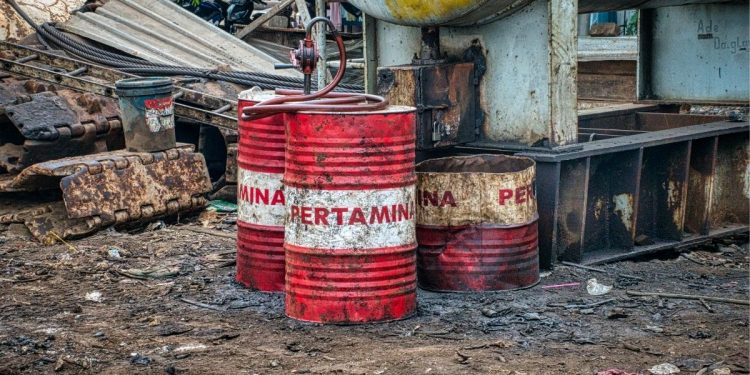Dangerous exposure can come about when employees enter confined spaces. There are multiple cases of employees getting hurt or killed. This is due to a variety of atmospheric agents and physical agents. They also face dangers from built-in hazards, like electrical, chemical, or mechanical injuries associated with specific types of equipment. These hazards are seldom fully inevitable, so locations demand to feature danger control strategies. Induced dangers from wrong judgments are another threat. Carelessness is a significant contributing agent when it comes to dangerous chemical exposure at construction locations. One of the biggest hazards faced by construction employees is exposure to dangerous chemicals at construction sites. However, you need access to clear and accurate legal info. This will help you make the best decision for your case If you get an injury due to risky chemical exposure.
Zinc
The use is in the manufacture of brass. We manufacture galvanized metals with the use of zinc. Inhalation of smoke can happen when welding. Also, it can come about during cutting on zinc-covered metals. Exposure to zinc can bring on a metal smoke fever.
Cadmium
The use of cadmium is as a rust-preventive coating on steel. It is also employed as an alloying component. Acute exposures to cadmium can produce harsh lung irritation or pulmonary Edema. It can indeed be fatal. Long-term exposure to cadmium can result in emphysema. Also, it can damage the kidneys.
Beryllium
Its use is as an alloying element with copper and other base metals. Acute exposure can pan out in chemical pneumonia. Long-term exposure can result in shortness of breath, chronic cough, and significant weight loss, accompanied by tiredness and general weakness.
Iron Oxide
Iron is the chief alloying element in steel manufacture. During the welding process, iron oxide poisonous fumes arise from both the base matter and the electrode. The immediate quick effect of this exposure is irritation of nasal passages, throat, and lungs.
Mercury
We use alloys to cover metals to avert rust or inhibit foliage growth (marine paints). Heavy heat of the arch or gas flame produces mercury vapors. Exposure may produce digestive disorders such as stomach pain and diarrhea damage. It also causes respiratory failure. Long-term exposure may produce various effects. These include tremors, emotional instability, and hearing harm.
Fluorides
Fluoride alloys are in the coatings of several kinds of fluxes applied in welding. Exposure to these fluxes may aggravate the eyes, nose, and throat. Also, repeated exposure to air over a prolonged period may bring on pulmonary Edema (fluid in the lungs) and bone damage.
Chlorinated Hydrocarbon Solvents
Various chlorinated hydrocarbons are cleaning agents. The use is in the degreasing process. The vapors are a concern in welding. This is because the heat and ultraviolet radiation from the arc break down the vapors. This forms poisonous and prickly phosgene gas.
Phosgene
Phosgene forms from the breakdown of chlorinated hydrocarbon solvents. Ultraviolet radiation performs this breakdown. It reacts with moistness in the lungs. This further gives hydrogen chloride. This hydrogen chloride can in turn destroy lung tissue. So, any use of chlorinated solvents should be far away from welding operations.
Carbon Monoxide
It is a gas formed with the deficient combustion of various fuels. Welding and cutting may produce eloquent quantities of carbon monoxide. Welding operations use carbon dioxide as an inert gas shield. This may produce dangerous chemical immersion of carbon monoxide. This is done in inadequately ventilated areas caused due to “breakdown” of shielding gas.
Ozone
Ultraviolet light from the welding arc produces ozone. We produce ozone in higher quantities with gas metal arc welding (GMAW or short-bow), gas tungsten arc welding (GTAW or Heli- arc), and plasma arc cut. So, ozone is a highly active form of oxygen. It can irritate all mucous membranes. Both nitrogen dioxide and ozone have long-term pulmonary effects.
Nitrogen Oxides
UV light produces nitrogen oxides (NO, NO2), from the nitrogen and oxygen in the air. Various instruments produce nitrogen oxides. The most important of them is gas metal arc welding (GMAW or short-arc). Other arcs such as gas tungsten arc welding (GTAW or Heli- arc) and plasma arc cutting are also used. High absorption can bring about shortness of breath, chest pain, and fluid in the lungs (pulmonary Edema).
Protect yourself from workplace hazards!
Rapid technological advancements in construction require further and further attention is paid to human security issues. Threats come about both at the stage of building complexes and during their use. Some bumps are easy to identify during construction stages. These are shocks and vibrations. Others are hidden from sight and immediate sensing. These are the dangerous effects of chemicals. In addition to accidents that come off on construction locations, there are still objective hazards, which may happen throughout the lifespan of the facility. Clearly distinguishable ones are like earthquakes, hurricanes, fires. Also, there are hidden dangers as well as bacteriological contamination, radiation, or chemical interactions that occur in time.









Discussion about this post